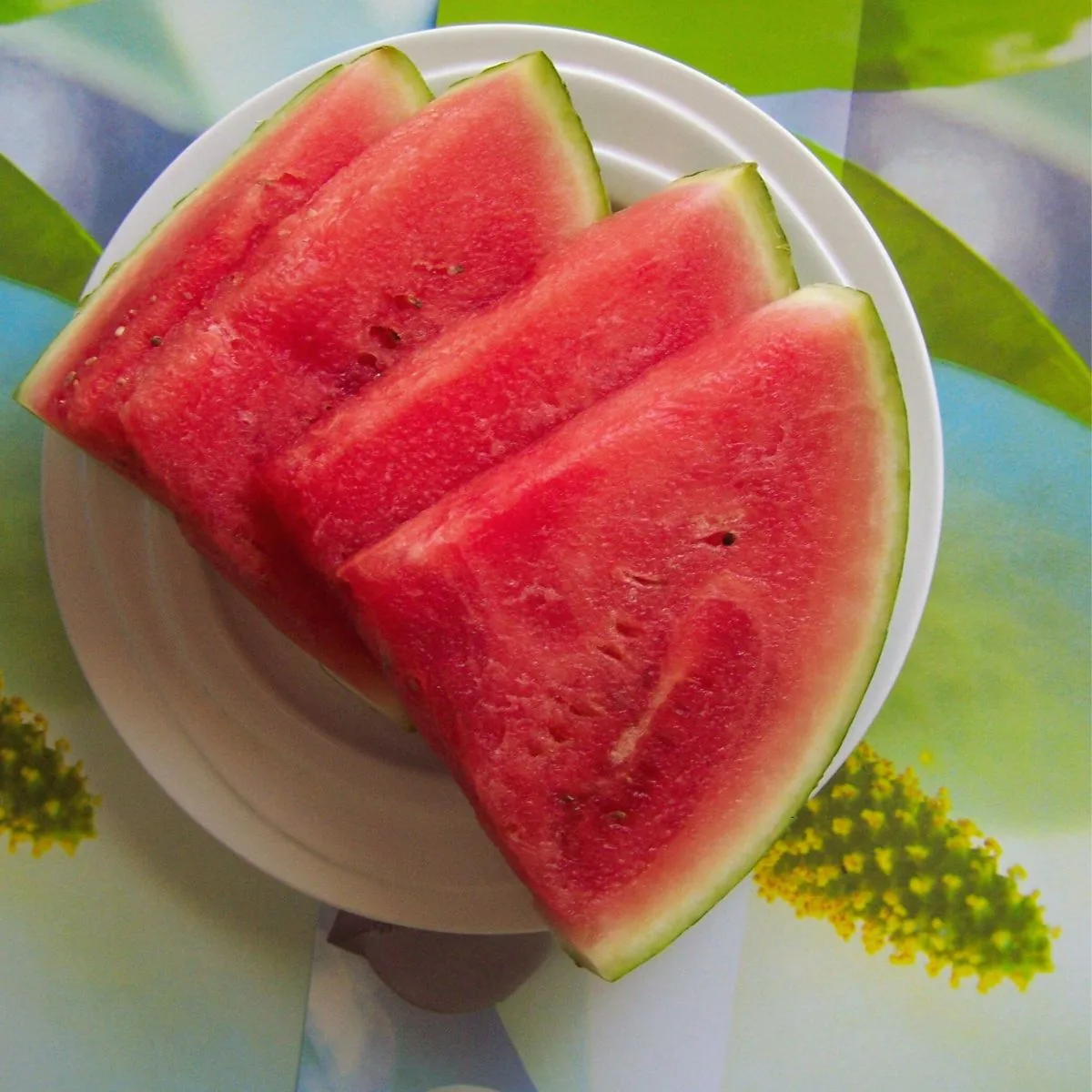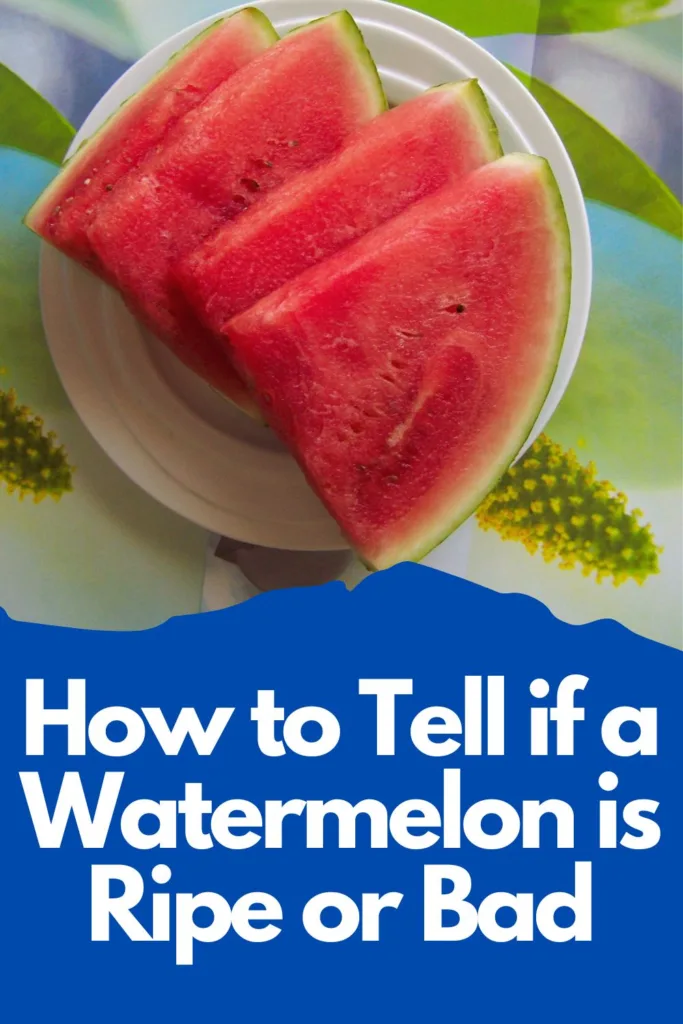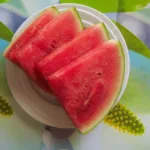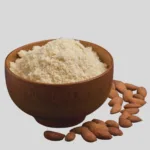Selecting the perfect watermelon involves a mix of visual cues, tactile examination, and olfactory tests. Here’s how to discern a ripe watermelon from one that’s not worth your picnic.
Check Out the Exterior
A ripe watermelon should present a firm, symmetrical shape without significant bruises, cuts, or dents. It’s important for the watermelon to feel heavy for its size, a sign of adequate water content, which contributes to juiciness. A good rule of thumb is to look for the field spot—where the watermelon rested on the ground. A ripe one will have a creamy yellow or light brown spot, while a white or green spot might indicate it’s not ready.
Examine the Watermelon’s Rind
How the watermelon looks is very important. The rind of a ripe watermelon should be dull, not shiny. A shiny exterior is a clear indicator of an underripe fruit. Press gently on the rind; it should be hard and resist pressure. This is crucial; a soft rind may signal that the watermelon is overripe or beginning to spoil. For seedless varieties, the easiest way to predict sweetness is to check for a uniform pattern of webbing or sugar spots—small, black dots or streaks across the whole watermelon. Also, be wary of noticeable dark spots or patches of greenish-blue, as these can be signs of bruising or mold, respectively.
Smell the Watermelon
The aroma of a watermelon can be a reliable indicator of its ripeness and overall condition. A ripe watermelon will emit a sweet and slightly tangy scent from the blossom end—the end opposite the stem. If you detect a sour or fermented smell, the watermelon is likely overripe or spoiled. Lack of any aroma might suggest the watermelon is underripe. Trusting your sense of smell is often the best tool for choosing a watermelon that’s ripe and ready to eat, ensuring you leave the store with a fruit that’s at the peak of its freshness and flavor.
Signs of Spoilage on a Watermelon
Identifying a spoiled watermelon is crucial for enjoying this refreshing fruit safely. Look out for the following signs of spoilage, paying close attention to mold, texture changes, and other indicators that suggest the watermelon is no longer good to eat:
- Surface Mold or Soft Spots: Signs of mold on the watermelon’s exterior are a definitive sign of spoilage. Soft, soggy spots compromise the watermelon’s integrity, indicating internal breakdown and potential mold development beneath the surface.
- Unpleasant Odor: A fresh watermelon will emit a mild, sweet aroma. An off-smelling watermelon, particularly with a sour or fermented scent, is a clear indicator that the watermelon has gone bad.
- Leakage or Seepage: Liquid oozing from the watermelon suggests fermentation or internal rot, often accompanied by a sour smell, signaling that the watermelon is spoiled.
- Discoloration: Look for unusual discoloration on the rind, such as dark or black spots, which can signal spoilage. Inside, the flesh should be vibrant and uniform. A dull, grayish coloration or any signs of discoloration within the flesh are indicative of a bad watermelon.
- Texture Changes: The inside of a good watermelon will be firm and crisp. If you encounter mealy, mushy, or overly soft flesh, it’s a sign of decomposition. These texture changes, particularly mealy, mushy texture, or soggy spots within the flesh, are telltale signs that the watermelon is no longer edible.
- Taste Test (If Unsure): If the watermelon seems fine visually and doesn’t smell off, but you’re still uncertain, a small taste can help decide. A spoiled watermelon may taste bland, watery, sour, or fermented. Any deviation from the watermelon’s natural sweet and juicy flavor suggests it’s a bad watermelon and should be discarded
How to Store Watermelon to Keep It Fresh
Proper storage is key to maintaining the freshness and taste of your watermelon after bringing it home from the grocery store. Whether you’ve bought a whole melon or pre-cut slices, following these storage tips will help ensure your watermelon stays delicious for as long as possible:
Whole Watermelon
The best place to store a whole watermelon is in a cool, dark spot. If you have room, storing the melon in the fridge is ideal as it can keep it fresh for about 2-3 weeks. If space is an issue, keeping the watermelon at room temperature on the counter is fine for a week or so. The cooler temperature slows down the ripening process, prolonging the fruit’s life.
Cut Watermelon
Once cut, watermelon should be stored differently to maintain its freshness. First, if you’re not planning to eat the entire melon in one sitting, cut the watermelon into slices or cubes and place them in an airtight container. This container helps to keep out moisture and other flavors from the fridge that could affect the taste of the watermelon. If an airtight container isn’t available, tightly covering the cut surfaces with plastic wrap is also effective. Stored this way, the watermelon can last in the fridge for 3-5 days.
Tips for Extended Freshness
- Prevent Drying Out: To prevent the watermelon from drying out, make sure it’s covered with plastic wrap or stored in an airtight container. This is especially important for cut watermelon to retain its juiciness and texture.
- Avoid Cross-Contamination: Store your watermelon away from strong-smelling foods in the fridge to prevent it from absorbing any unwanted odors.
- Consider Freezing: For longer preservation, watermelon can be frozen. Cut the melon into pieces and remove the rind, then freeze the pieces on a baking sheet before transferring them to a freezer bag. Frozen watermelon is perfect for smoothies or as a cool snack, though it may be too soft for some other uses once thawed.
Have questions or suggestions about how to tell if a watermelon is bad? Leave them in the comments below.









